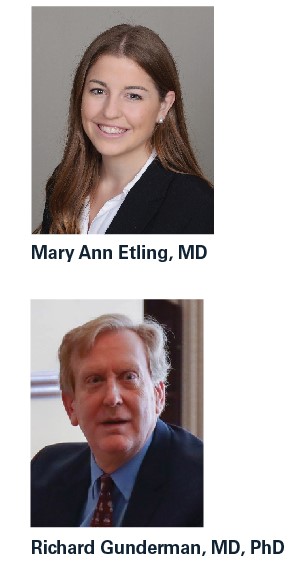 By: Mary Ann Etling, MD, and Richard Gunderman, MD, PhD
By: Mary Ann Etling, MD, and Richard Gunderman, MD, PhD
The practice of medicine can be no better than the ideas that it is practiced with. If we operate with an inaccurate vision of what medicine really is, or what it is meant to be, then we will fail to notice things that deserve our attention, accord too much significance to things that should not matter, and fail to chart the best course for the profession and our patients. On the other hand, a clear vision and sincere dedication to what matters most can enhance our care and the fulfillment we derive from it.
There are many sources for good ideas, with teachers, colleagues, and patients among them, but another excellent and too-little-appreciated resource is works of literature. Great minds of the past, such as Homer, Sophocles, Dante, Shakespeare, Swift, and Tolstoy, have shed immense light on the aims of medicine and biomedical science that deserve far more attention in the lifelong education of physicians. They show us vital truths largely absent from medical textbooks and journals.
For those searching for such insights, Homer’s “Odyssey” or Swift’s “Gulliver’s Travels” can prove a rather intimidating starting point. It can be helpful to start with a text a bit closer to our own day and time, from which we can more easily draw parallels with our own daily practice. One such book is John Berger’s 1967 “A Fortunate Man: The Story of a Country Doctor,” which contains beautiful photographs by Jean Mohr of a physician with his patients.
The physician in question is John Eskell, referred to in the book as John Sassall, who moved to and practiced medicine in western England’s Forest of Dean. Sassall understood the importance of building community in meeting health needs, and he got his community involved in creating a garden in the moat of an old castle that had become a dumping ground. Sassall arranged for the donation of equipment and supplies and then enlisted his neighbors as voluntary laborers.
Sassall himself was a busy man. He spent his days in surgery, making house calls, and tending to emergencies of one sort or another. He attended nearly every birth in his community, and he was often present at the bedside of the dying. His sleep was regularly interrupted by neighbors in need. Why would such a man, who already seemed to lack enough hours in the day, take on and act as champion of a project to build a community garden?
The answer lies in the power of collaboration. Sassall and his neighbors were not merely carrying out a community improvement project; they were working together toward a common end, and through their collaboration, they were building a different sort of relationship—one better characterized as social than medical. Sassall knew that to care as well as he could for the community’s members, he needed to build their trust, and that to do so, he needed to become one of them.
Sassall was not only highly knowledgeable and technically proficient, but was also attempting to become just the physician his community needed. He knew that class, education, and life experience differences might constitute barriers between physicians and patients. The garden, Berger wrote, offered the possibility of talking together and working side-by-side for a common end, and in doing so, their shared words and labor would transcend the project itself and build deeper relationships.
Some might call it networking. Others might invoke the concept of team building. But above all, it is the discovery of a deeper, shared humanity that is often papered over by any number of more superficial distinctions. The rustic men who built the garden often found it difficult to talk to each other about personal matters, largely lacking the necessary vocabulary and experience to do so, but they could roll up their sleeves and build something and thereby become friends.
In the intervening half-century, this challenge has only grown more acute. Today, the average physician occupies a relatively privileged place in life, having enjoyed at least 11 years of post-secondary education and often occupying a stratum in the top 1 or 2 percent of household incomes. Sassall chose not to reside in a gated community. He did not talk down to his patients. Instead, he sought to learn from them. He paid the price to become one with his neighbors.
Berger’s book reminds us that a garden is more than a source of nutrients or sensual delights—it’s also a teacher. Its lessons are not propositional, like those of textbooks and journals, but experiential. They come not through passive observation but active engagement, typically entailing some share of sweat equity and calluses. But they remind us of something profound: true restoration and health promotion require a whole village.
The Roman philosopher Cicero once said that you have everything you need if you have a garden and a library. His words speak volumes to physicians. To find genuine fulfillment in our careers, we need to know a great deal about medicine. But we also need to know the patients for whom we care—not just their laboratory test results, but the kinds of persons they are and the manner in which they live. A story like Sassall’s deepens our understanding of what building community really means.
Mary Ann Etling, MD, an IU School of Medicine alumnus, is a first-year pediatric resident at the University of Minnesota. IUSM’s Richard Gunderman, MD, PhD, is the chair of the ISMA Physician Wellness Steering Committee.